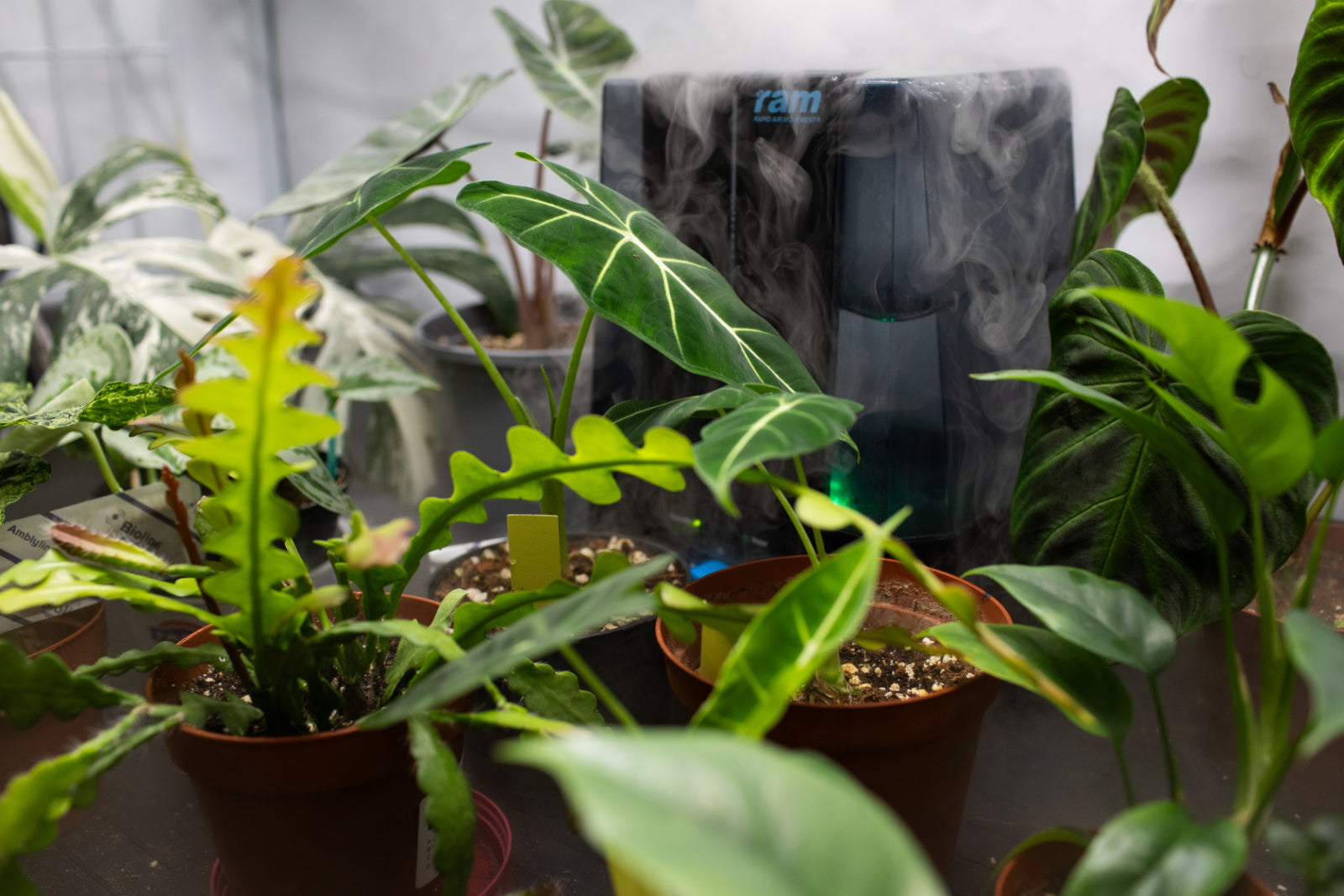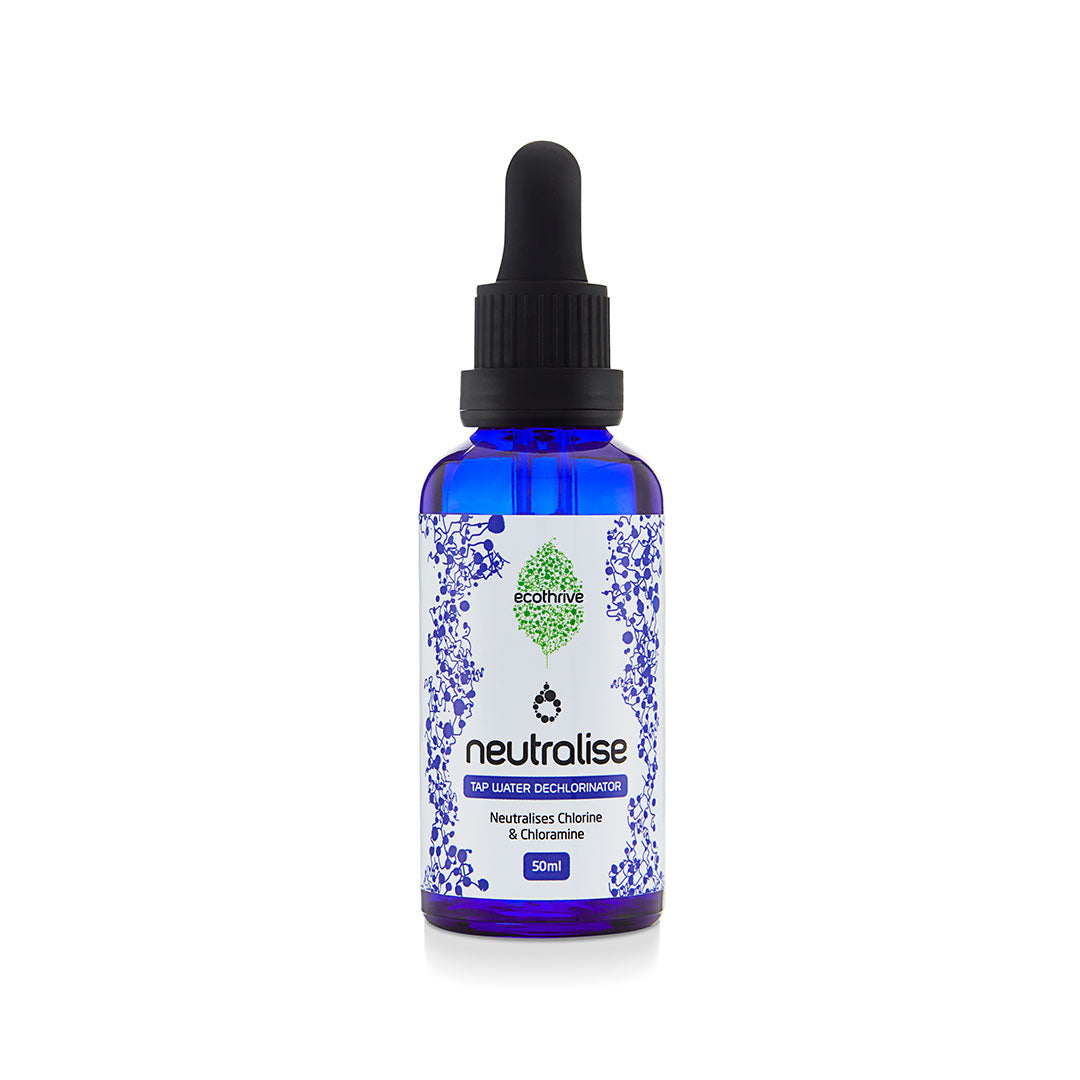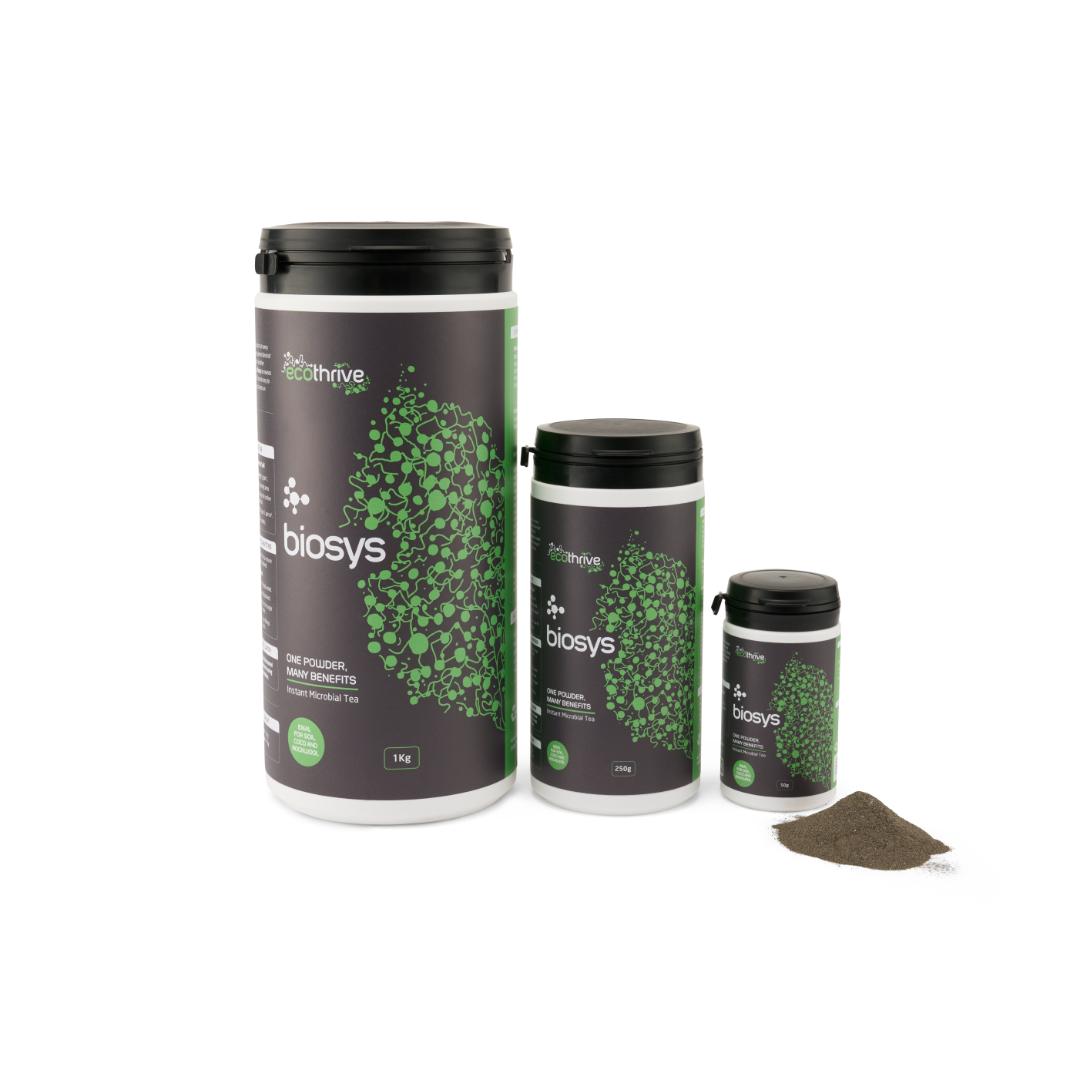



Trace
Small Doses, Big Difference
Ecothrive Trace corrects micronutrient deficiencies and unlocks your plants' full potential. Compatible with soil, coco or hydroponics, this premium trace element supplement contains optimal levels of iron, manganese, boron, zinc, copper, and molybdenum, all naturally chelated using a powerful plant extract. Approved by the Soil Association for organic cultivation, Ecothrive Trace promotes vigorous, fast-growing plants and truly exceptional crop quality.
Tax included. Shipping calculated at checkout


- Provide essential micronutrients for organic and living soil cultivation, where trace elements are often below adequate levels.
- Optimise micronutrient levels in very dilute hydroponic nutrient solutions used for propagation.
- Supply micronutrients quickly to the crop when used as a foliar spray.

Essential micronutrients like boron, copper, zinc, and iron are often the first to become depleted in potting soils. Soil amendments such as rock dusts, seaweed and composts can help, but our own substantial lab testing of potting soils has shown repeatedly that actual trace element availability is often less than ideal or non-detectable.
Additionally, highly-diluted hydroponic feed solutions for cuttings, seedlings, and juvenile plants can lack adequate levels of micronutrients.
Symptoms can be very subtle and difficult to recognise, in plant nutrition this is often called 'hidden hunger'. Trace element deficiencies are known to negatively impact the uptake of primary and secondary nutrients. Common signs like interveinal chlorosis, stunted roots, and poor flowering are often overlooked or misdiagnosed.

Organic / Living Soil Growers: Cultivators adhering to organic farming practices who are in search of natural, organic soil amendments to maintain or restore the nutrient balance in their soil. Ideal for raised beds and living soil enthusiasts.
Commercial Horticulturists: Professionals looking for reliable and effective solutions to address trace element deficiencies in the soil.
Hydroponic and Coco Coir Growers: Sometimes even hydroponically grown plants can suffer from deficiencies in trace elements. Ecothrive Trace can help to restore levels of key micronutrients.
Houseplant Enthusiasts: Houseplants often encounter trace element deficiencies, especially when kept in small containers for extended periods.
- Provide essential micronutrients for organic and living soil cultivation, where trace elements are often below adequate levels.
- Optimise micronutrient levels in very dilute hydroponic nutrient solutions used for propagation.
- Supply micronutrients quickly to the crop when used as a foliar spray.
Essential micronutrients like boron, copper, zinc, and iron are often the first to become depleted in potting soils. Soil amendments such as rock dusts, seaweed and composts can help, but our own substantial lab testing of potting soils has shown repeatedly that actual trace element availability is often less than ideal or non-detectable.
Additionally, highly-diluted hydroponic feed solutions for cuttings, seedlings, and juvenile plants can lack adequate levels of micronutrients.
Symptoms can be very subtle and difficult to recognise, in plant nutrition this is often called 'hidden hunger'. Trace element deficiencies are known to negatively impact the uptake of primary and secondary nutrients. Common signs like interveinal chlorosis, stunted roots, and poor flowering are often overlooked or misdiagnosed.
Organic / Living Soil Growers: Cultivators adhering to organic farming practices who are in search of natural, organic soil amendments to maintain or restore the nutrient balance in their soil. Ideal for raised beds and living soil enthusiasts.
Commercial Horticulturists: Professionals looking for reliable and effective solutions to address trace element deficiencies in the soil.
Hydroponic and Coco Coir Growers: Sometimes even hydroponically grown plants can suffer from deficiencies in trace elements. Ecothrive Trace can help to restore levels of key micronutrients.
Houseplant Enthusiasts: Houseplants often encounter trace element deficiencies, especially when kept in small containers for extended periods.



Why Micronutrients Make a Big Difference
Increased Crop Quality: With a balanced and consistent supply of trace elements, plants don’t suffer from “hidden hunger” and can produce truly premium quality results.
Reinvigorates and Restores Soil Health and Vitality: Use Ecothrive Trace to tactically boost trace elements at key lifecycle stages.
Boosts Plant Health and Vigour: Use Ecothrive Trace as a root feed or foliar spray to enhance nutrient uptake and availability.
Improved Photosynthesis and Enzyme Function: Ecothrive Trace delivers a full complement of micronutrition, including iron and manganese which are crucial for chlorophyll production and enzyme function.
Enhances Nutrient Uptake and Availability: Trace elements help to power the uptake of macro and secondary nutrients like nitrogen and phosphorus.
Supports Soil Microbiology: Ecothrive Trace aids enzyme activation, nutrient cycling, nitrogen fixation and cycling, and microbial respiration. A balanced supply of trace elements supports a diverse microbial community in the soil, which is essential for soil health and resilience against stress conditions.
Enhanced Resistance to Diseases: A balanced soil ecosystem, enriched with trace elements, can improve plant resistance to diseases and stress.
Micros Support Uptake of Primary and Secondary Nutrients:When trace elements are sufficiently available, they support the assimilation of macro and secondary nutrients too:
- Iron and Molybdenum >> Nitrogen: Iron is vital for chlorophyll synthesis and is a component of many enzymes involved in nitrogen metabolism, thus supporting nitrogen utilisation. Molybdenum is a cofactor for enzymes involved in nitrogen metabolism, particularly nitrogen fixation and nitrate reduction, supporting nitrogen utilisation.
- Zinc >> Phosphorus: Zinc activates enzymes that are essential for phosphorus metabolism.
- Boron >> Calcium: Boron is essential for the stability and function of cell walls, and aids in calcium utilisation by enhancing its transport across cell membranes.
How To Use

As a root feed, Trace is suitable for use in all growth stages. While Trace has been formulated primarily with living soil growers in mind, it can also be used to supplement micronutrient levels in dilute hydroponic nutrient solutions.
Living soil and organic potting mixes
During the vegetative and flowering stage apply 0.25-0.5ml per litre with every watering until 1-2 weeks before harvest.
Propagation
Trace can be very useful during propagation to supplement dilute nutrient solutions. Apply 0.25 ml per litre of water with every watering.
Hydroponics and Coco Coir
Note that full-strength mineral nutrient solutions already contain sufficient levels of trace elements. Use Trace to supplement micronutrient levels in quarter- and half-strength nutrient solutions. Add Trace after mixing base nutrients.
Half-strength base nutrients: Add 0.25ml per litre of water.
Three-quarter-strength base nutrients: Add 0.125ml per litre of water.

As a foliar feed, Trace can be used throughout propagation and vegetative growth instead of feeding through the root zone. If you're growing fruiting plants, Trace can be sprayed throughout the cycle right up to harvest. For flowering plants, stop foliar sprays once the flowers have started to form. Foliar applications are fast acting and ideal when correcting a deficiency.
- Spray 10ml per litre every 10-14 days.
As a root feed, Trace is suitable for use in all growth stages. While Trace has been formulated primarily with living soil growers in mind, it can also be used to supplement micronutrient levels in dilute hydroponic nutrient solutions.
Living soil and organic potting mixes
During the vegetative and flowering stage apply 0.25-0.5ml per litre with every watering until 1-2 weeks before harvest.
Propagation
Trace can be very useful during propagation to supplement dilute nutrient solutions. Apply 0.25 ml per litre of water with every watering.
Hydroponics and Coco Coir
Note that full-strength mineral nutrient solutions already contain sufficient levels of trace elements. Use Trace to supplement micronutrient levels in quarter- and half-strength nutrient solutions. Add Trace after mixing base nutrients.
Half-strength base nutrients: Add 0.25ml per litre of water.
Three-quarter-strength base nutrients: Add 0.125ml per litre of water.
As a foliar feed, Trace can be used throughout propagation and vegetative growth instead of feeding through the root zone. If you're growing fruiting plants, Trace can be sprayed throughout the cycle right up to harvest. For flowering plants, stop foliar sprays once the flowers have started to form. Foliar applications are fast acting and ideal when correcting a deficiency.
- Spray 10ml per litre every 10-14 days.


Why Are Micronutrients The “Missing Link” For So Many Growers?
To understand why, we need to be familiar with the key roles of boron, copper, manganese, zinc, iron and molybdenum and how they contribute to plant health.
Macronutrients such as nitrogen, phosphorus, and potassium often dominate horticultural discussions, but micronutrients are equally vital for plants. Deficiencies in these essential trace elements can stunt growth and seriously limit your yields.
Check out our micronutrients table to explore the importance of boron, copper, manganese, zinc, iron and molybdenum and learn how to recognise deficiencies.
Trace Contains - Iron (0.6%), Manganese (0.6%), Copper (0.04%), Zinc (0.1%), Boron (0.1%), Molybdenum (0.01%), Lignosulfonic acid.
Trace used at 0.5ml per litre provides - 3ppm Iron, 3ppm Manganese, 0.5ppm Zinc, 0.2ppm Copper, 0.5ppm Boron, 0.05ppm Molybdenum.
Boron - Keeps Cells Healthy
This micronutrient is key for cell wall formation and cell division. It also aids seed and fruit development while regulating carbohydrate metabolism. Plants deficient in boron show stunted growth and death of meristem tissue leading to rosetting. Fruits and seeds develop poorly.
Copper - Supports Enzymes
Copper acts as a cofactor enabling key enzymes for photosynthesis, respiration and nitrogen metabolism. It also facilitates lignin synthesis to strengthen cell walls and is involved in pollen formation. Deficiencies lead to dark green curled leaf tips, poor flowering and fruiting, and stunted plants.
Manganese - Activates Essential Enzymes
As an enzyme activator, manganese enables reactions for photosynthesis, nitrogen metabolism and compound synthesis. Plants low in manganese have interveinal chlorosis in younger leaves, slowed growth and higher disease susceptibility.
Zinc - Powers Growth Hormones
Zinc is necessary for auxin synthesis which regulates plant growth and development. It also enables key enzymes for nucleic acid metabolism. Deficient plants exhibit smaller, abnormal leaves, stunted roots and shortened stem length between leaves.
Iron - Makes Chlorophyll Possible
Iron facilitates chlorophyll creation for photosynthesis and acts as a catalyst in energy-producing reactions. It is also required for synthesising some enzymes and proteins. Deficient plants show interveinal chlorosis progressing to completely white leaves, impacting yield and quality.
Molybdenum - Helps Plants Use Nitrogen and Phosphorus
Molybdenum enables the enzyme nitrate reductase to reduce nitrate to ammonium, making nitrogen available to plants. It also helps form legume nodules and convert inorganic phosphorus. Symptoms include older leaf scorching and chlorosis, stunted growth and poor nutrient utilisation.
FAQ
What is Ecothrive Trace?
Ecothrive Trace is a concentrated organic liquid trace supplement designed to maintain optimal levels of essential micronutrients throughout the plant life-cycle. It helps avoid trace deficiency, often referred to as "hidden hunger," by quickly replenishing your growing medium with essential trace elements.
When will Ecothrive Trace be available?
Ecothrive Trace will be available from July 26th, 2024.
Is Ecothrive Trace approved for organic cultivation?
Yes, Ecothrive Trace is approved for organic cultivation by the Soil Association.
What is the chelating agent used in Ecothrive Trace?
Ecothrive Trace uses a powerful plant extract called Lignosulphonate. This is derived from lignin, a natural organic polymer produced during wood processing, making it perfectly compatible with organic cultivation methods.
Why lignosulphonate?
Lignosulphonate acts as a natural chelating agent, allowing it to bind onto essential micronutrients (such as iron, manganese, zinc, and copper), keeping them soluble and easier for plants to absorb. Its key benefits include:
- Optimum Availability: Complexing micronutrinets with a chelating agent ensures they remain in a from the plants can easily uptake. Lignosulphonate is a natural substance that outperforms alternative natural chelators such as amino acids and humic acids.
- Biodegradable: Being derived from natural lignin, lignosulphonate is biodegradable and environmentally friendly.
- Improved Soil Structure: It can act as a soil conditioner, improving soil structure and water retention.
What are the key benefits of using Ecothrive Trace?
Ecothrive Trace provides a balanced and consistent supply of trace minerals—often the first group of elements to become depleted in potting soils. Trace supplies 6 elements in the perfect balance to help with chlorophyll production, enzyme function, nutrient cycling and nitrogen fixation. It also supports a diverse microbial community in the soil, enhancing soil health and resilience against stress conditions.
Why are trace elements important for plant health?
Trace elements like boron, copper, manganese, zinc, iron, and molybdenum are crucial for various plant functions, including cell wall formation, enzyme activation, growth hormone production, chlorophyll creation, and nitrogen and phosphorus utilisation. Deficiencies can stunt growth and limit yields.
How do I use Ecothrive Trace during propagation?
During propagation, use Ecothrive Trace as a root feed to provide young plants and seedlings with essential trace elements. This can be particularly useful as a supplement to dilute nutrient solutions. Apply 0.25 ml per litre of water as a root feed with every watering.
How do I use Ecothrive Trace in the vegetative stage?
Apply 0.25-0.5ml per litre of water with every watering. For foliar feeding, spray 10ml per litre every 10-14 days. Choose one application method, you do not need to folair and root feed Trace.
How do I use Ecothrive Trace in the flowering stage?
Use Ecothrive Trace during the flowering stage to maintain micronutrient levels. Apply 0.25-0.5ml per litre of water with every watering until 1-2 weeks before harvest. For foliar feeding, use 10ml per litre every 10-14 days, but stop spraying once flowers begin to form. Choose one application method, you do not need to folair and root feed Trace.
Is Ecothrive Trace compatible with hydroponic systems?
Yes, Ecothrive Trace is compatible with hydroponic systems including coco coir, rockwool, and deep water culture. Your hydro or coco base nutrients should provide adequate levels of trace elements when used at full strength. If using lower than recommended full strength, you can add Ecothrive Trace to top up these vital micronutrients.
Using Trace a 0.5ml per litre provides a full dose of micronutrients, so if using your hydro or coco nutrients at half strength, use Ecothrive Trace at 0.25ml per litre. Add Trace to your nutrient solution after mixing your base nutrients.
How can I accurately measure small amounts of Ecothrive Trace for dilution?
For small volumes, it can be difficult to measure 0.25ml or 0.5ml precisely. A practical method is to dilute 5ml of Ecothrive Trace in 1 litre of water to create a stock solution. To use this stock solution:
- For 0.25ml per litre: Mix 50ml of the stock solution with 1 litre of water.
- For 0.5ml per litre: Mix 100ml of the stock solution with 1 litre of water.
Store the stock solution in a cool, dark place in a well-sealed container.
Should I add Ecothrive Trace before or after base nutrients?
Add Ecothrive Trace to your nutrient solution after mixing your base nutrients. This ensures that the chelated trace elements are properly distributed and available for plant uptake.
Is Ecothrive Trace compatible with other nutrients and additives?
Yes, Ecothrive Trace is tank stable and highly compatible with other nutrients and additives. It can be applied as a stand-alone feed or mixed with other products as part of your regular nutrient programme.
Is there a risk of soil or water contamination with Ecothrive Trace?
No, Ecothrive Trace uses lignosulphonate, a biodegradable organic chelating agent, ensuring there is no risk of soil or water contamination.
Is Ecothrive Trace safe for microbiological life in the soil?
Yes, Ecothrive Trace supports and enhances microbiological life in the soil. It promotes a balanced supply of trace elements, which is essential for a diverse microbial community and overall soil health.
How can I recognise deficiencies of essential trace elements?
Remember, by the time you see visual problems, it’s already late in the day. Use Trace to help prevent the following micronutrient deficiency symptoms:
- Boron: Stunted growth, hollow stems, poor fruit and seed development.
- Copper: Dark green curled leaf tips, poor flowering and fruiting.
- Manganese: Interveinal chlorosis in younger leaves, slowed growth.
- Zinc: Smaller, abnormal leaves, stunted roots.
- Iron: Interveinal chlorosis progressing to white leaves.
- Molybdenum: Older leaf scorching, stunted growth, poor nutrient utilisation.
How can I prevent nutrient leaching when using Ecothrive Trace?
The natural chelating properties of lignosulphonate helps to reduce nutrient leaching, ensuring sustained micronutrient availability and promoting nutrient use efficiency.






